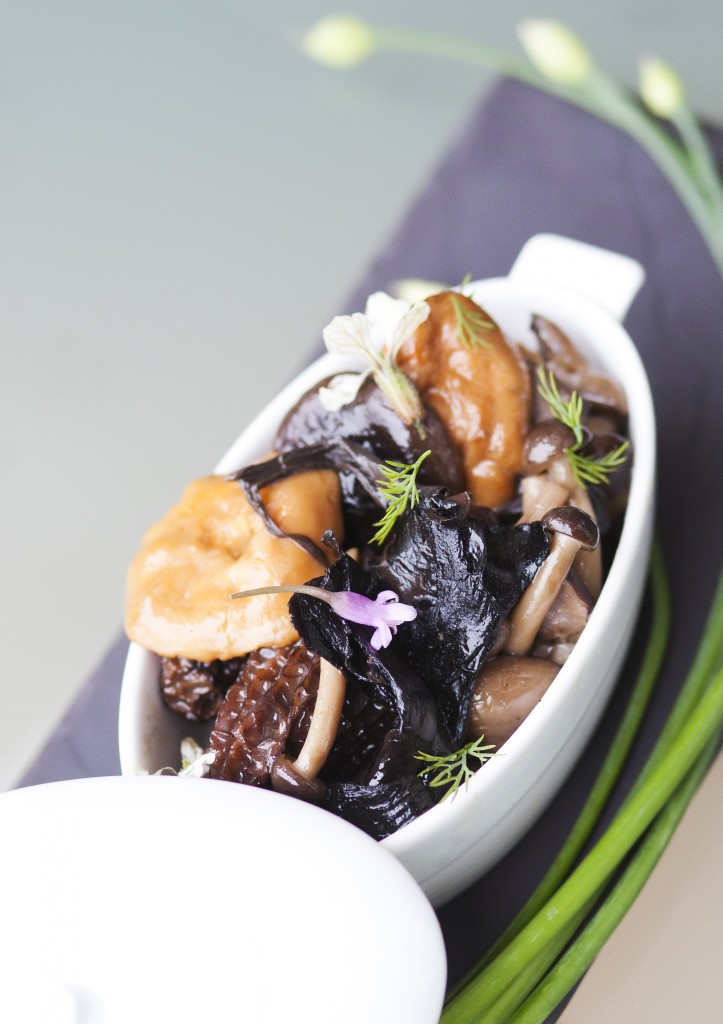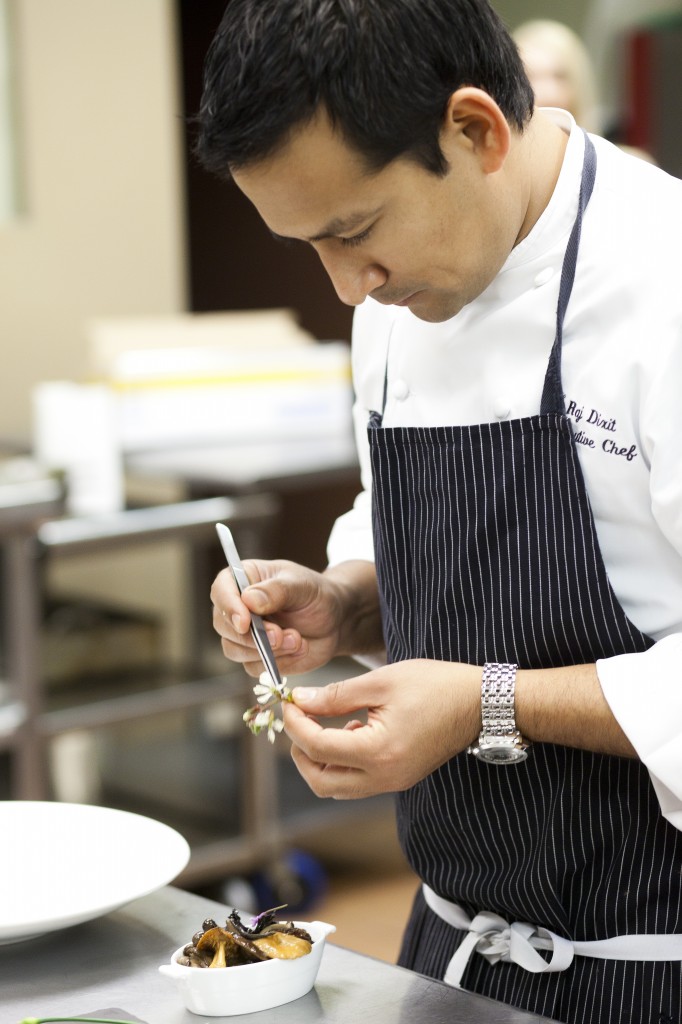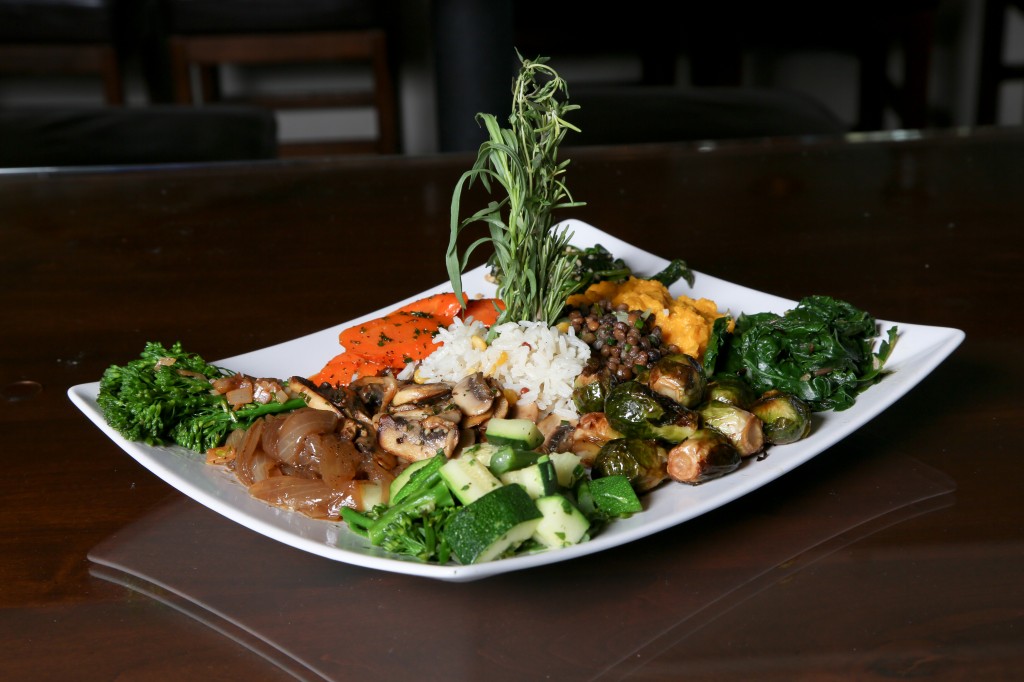
The once-humble vegetable is appearing on menus in imaginative ways.
By Karlee Prazak
Pinpointing what constitutes a balanced meal can create quite a stir in today’s culinary scene. A “balanced meal” is somewhat of a myth that exists just beyond the center aisles of the supermarket, nestled somewhere among the fresh produce and seasonal offerings. People speak of it, chefs strive for it, but what truly encapsulates such a meal is up for debate.
For a long time, meals in the U.S. were, in a very rudimentary manner, based on a three-sided geometric shape known fondly as the Food Guide Pyramid, which we were programmed to accept as the one and only dietary template. Since 2011, however, the pyramid has been reimagined into MyPlate, the current nutrition guide from the U.S. Department of Agriculture that features a delicate balance of fruits, vegetable, grains, protein and dairy recommended for each meal.
This modern revival opened the kitchen door to new interpretations of what constitutes a healthy, balanced meal not only at home but also at restaurants. The result has animal-based proteins disappearing from plates and menus alike—and, no, it’s not because vegetarians are taking over, although Lindsay Smith-Rosales, co-owner and executive chef of Nirvana Grille in Laguna Beach, does acknowledge this as a factor. “I feel like with the gluten free-ism, vegetarianism, veganism and Paleo-ism, they’re all about whole foods and what would normally be available, so more and more people are demanding [the final products] be good,” she says.
With exceptional final products as an end goal, chefs and forward-thinking foodies are reimagining the delicate balance of textures and flavors that animal-proteins once brought to plates and, instead, achieving it just as aptly, and fillingly, with the once-humble vegetable sidekick. “It’s not something that’s elementary,” Lindsay explains. “It’s about the technique and the method being used to allow [vegetables] to shine, and that’s the difference.”

VEGETABLE REVITALIZATION
If one were to trace the re-emergence of vegetables into fine dining, French chef Alain Passard of L’Arpege would most certainly be at the forefront of the conversation. Not only was the Michelin-starred chef the first to quite ambitiously and publicly remove red meat from his menu in 2001, but he also made it his challenge to impress the palate with an entirely vegetable-based meal. By scaling down excess condiments and seasonings, he exceeded expectations so well that people began to understand the need to celebrate vegetables as standalone entrees.
“He was a driving force for really just letting vegetables taste the way they should taste and really not disguising them,” explains Raj Dixit, executive chef at Stonehill Tavern at The St. Regis Monarch Beach in Dana Point. “[Vegetables,] when cooked properly, are just like an animal protein; they’re almost a little bit better, to be honest.”
Using a bounty produced from Alain’s off-site biodynamic garden just outside Paris, food critics and joyous diners alike reveled in dishes like green garlic soup, turnip and rhubarb saute and delicate vegetable ravioli. Since this surprisingly successful experiment began, Alain has reintroduced select seafood and meat courses. However, he left a lasting leafy precedence that has traveled the nearly 6,000 miles to influence local chefs and menus.
In Laguna, for instance, the scarlet beet ravioli served at Selanne Steak Tavern entirely bypasses the over-powering pasta.Instead, it utilizes a duo of thin beet shavings sandwiched around a small dollop of goat cheese and garnished with hazelnuts and a golden beet vinaigrette, celebrating this oft-forgotten root.
This minimalist approach proves the necessity of forgoing forced flavors, which is a style of cooking Raj explains is pertinent to executing vegetable-forward foods. “You never want to have a vegetarian dish where it’s nothing but carb load with a vegetable,” Raj explains. “It just becomes very redundant and lacks emotion.”
To illustrate, Raj calls Stonehill Tavern’s foraged mushrooms dish to center stage. The entree is filled with eight diverse mushrooms, each prepped and cooked differently to highlight individual strengths. Guests enjoy confit lobster mushrooms and grilled abalone mushrooms among the whole porcini variety, to name a few, all resting in a light dashi broth.
HOLDING THEIR OWN
Execution of veggie-centric cuisine requires the utmost precision because vegetables in their raw state rarely achieve a palatable entree-like appeal. It’s up to the chef to elevate them in both texture and technique. “Plants and vegetables are anatomically designed to create the exact same protein cell makeup as any meat product when eaten in balance,” explains Kenny Raponi, executive chef of Tabu Grill.

Kenny says the firm, earthy characteristics of beets make them a prime example of this, which is illustrated in Tabu Grill’s beet salad. The refined small plate features beets poached in a red wine court bouillon and then roasted to further enhance the flavors. The beets are then diced and served in a simple salad that utilizes fresh greens for a crunch to offset the softness of the beets, finished with a citrus-thyme vinaigrette.
While this is a wonderful light bite, tackling the texture of a full meal requires looking to vegetables that work together to compose a well-rounded dish. “[It is important to] focus on vegetables that are not only going to taste great but be great and provide us with the balance of nutrients and protein we all desire as diners,” Kenny explains.
Prime examples of this are portobello mushrooms and cauliflower. When marinated and grilled, both achieve a nice ratio of nutrition-to-indulgence that mirrors the likes of a steak, down to the necessity of a fork-and-knife combo to slice them down to bite-size pieces.
At Tabu, Kenny, who has helmed the kitchen at the south Laguna eatery for only a few short months, suggests the forbidden rice risotto that comes with seasonal, local vegetables as a go-to dish. If this admittedly doesn’t sound like the most glamorous vegetable option, don’t get discouraged. “Once I am a little more settled in here at Tabu, I will be adding a vegetarian dish to the menu that will be seasonal as well as showcase many different techniques for a single vegetable or two,” he promises.

The utilization of the various techniques is key, and leads to a second tip when dealing with ordinary vegetables: think outside the box. This is the case with Nirvana Grille’s vegetable plate, which serves up at least seven different types of produce, all cooked differently and constantly updated to reflect what’s in season.
For fall, diners will see roasted butternut or kabocha squash alongside wilted rainbow chard and the staple mixed vegetable saute. The key is showcasing the diverse techniques used to make the dish special.
“… It makes guests feel like it’s worth coming out because if there’s not enough effort or thought put into it, especially a vegetable, they can just do it at home,” Lindsay says.
When asked about her go-to method, Lindsay suggests using a blanching process where vegetables are momentarily submerged in boiling water, keeping them al dente, and later finishing them in a saute pan or roasting them in the oven. “It really takes the bite away,” she explains, adding that the process keeps the vegetables in the boiling water for the least mount of time possible, so the nutritional value doesn’t get leached out into the water. She says this technique is especially helpful when preparing large meals, such as Thanksgiving dinner, at home.
SEASONALLY SPEAKING
No matter which technique is used, the best way to make vegetables shine is to choose produce that’s in season, chefs say. “If you cook seasonally, you really don’t need anything on it, you just need to pick your cooking method, cook it, make it palatable and the vegetables have tons of flavor on their own,” Raj emphasizes, citing the veggie-centric dishes on the menu at Stonehill Tavern.
The restaurant’s 21-vegetable soup with a tomato-saffron broth is a perfect example of highlighting seasonal produce. Raj explains that “in the fall, it transforms itself” from its summer counterpart because of the available produce. In the fall/winter season, vegetables like winter squash, fennel, onion, tomato, members of the cauliflower family, asparagus, broccoli and dark greens like Swiss chard and kale start making more of an appearance.

This approach is wholeheartedly shared by Lindsay who, like many vegetarian-oriented chefs, says many of her dishes are conceptualized by cross-referencing several books to determine what’s in season and going from there. “It’s not just necessarily picking something fresh and serving it, although that’s great,” she says. “It’s also about what can you do with it to make it great.”
Lindsay often challenges herself by trying to utilize every inch of the product. For example, two-thirds of the asparagus sprig is used for dishes and the last third is ground down and strained into a silky soup bursting with flavor. Or, to prevent kale from being served like rabbit food, it’s massaged in olive oil the night before service so it acquires a more tender, flavorful taste.
When it comes down to it, Lindsay echoes many successful veggie-loving chefs when she says it’s really just about mastering this balancing act of learning what’s available at various times of year, what’s fresh and what’s the best way to make it shine without any smoke and mirrors. As she says, “When a chef is really great, the food is what takes center stage.”




